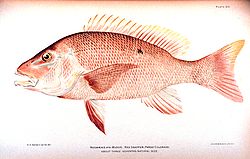Fake seagrass help us learn how to save dwindling fish populations
A large amount of New Zealand’s seagrass have been killed by sediments released from land development. The seagrass bed at Whangarei Harbour has for instance been reduced from 14 sq km in the 1960s to virtually non-existant today. And sedimentation this is not a new problem – between 1959 and 1966 Tauranga Harbour lost 90 per cent of its seagrass.
Researchers at New Zealands’s National Institute of Water & Atmospheric Research are now fitting the floor of the Whangapoua Estuary with plastic seagrass in an attempt to show how New Zealand’s fish stocks could be boosted by restoring the seagrass habitats. The “seagrass” consists of plastic fronds attached to wire frames, and the length of the fronds varies from 5 cm to 30 cm.
“We made them with tantalising long blades of artificial grass, the things fish really go for,” says NIWA fisheries ecologist Dr Mark Morrison. “What we found, initially, is that fish are really looking for shelter and seagrasses provide good protection to fish.”
The largest density of fish could be found where the density of seagrass was also at its largest.
Fish is now being tagged to make it possible for the researchers to track both growth rate and survival rate.
